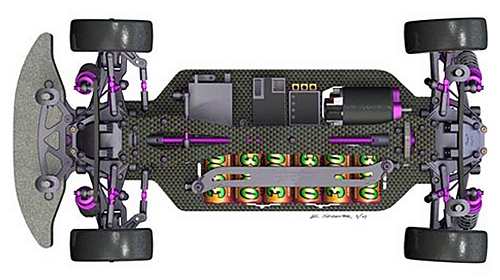

|
|
|


|
|
1/10 Scale Electric Rally/Touring Car:
HPI RS4 Pro-4 Chassis - # 185 - Radio Controlled ModelHistory and Info for the HPI RS4 Pro-4:
Introduced by HPI (Hobby Products International) in 2003, the RS4 Pro 4 Touring Car chassis - # 185 - was a complete re-design of the RS4 series, developed to provide a hugr range of fine tuning adjustment options for the experienced racer, and came as a bare chassis unassembled kit.
▼ Scroll Down for More Images ▼
|








|
|
|

★ HPI Racing RS4 Pro 4 Chassis ★

★ HPI Racing RS4 Pro 4 ★

|
Buying a Used HPI RS4 Pro-4
|
|
Manufacturers and Brands Catalogued, Listed and Reviewed by RC-Scrapyard.
At present, the RC Model Manufacturers, Brands and Distributors covered by us are: ABC Hobby, Academy, Acme Racing, Agama Racing, Amewi, Ansmann Racing, ARRMA, Team Associated, Atomic RC, Axial, AYK, Bolink, BSD Racing, Capricorn, Carisma, Carson, Caster Racing, Cen, Corally, Custom Works, Durango, Duratrax, ECX - Electrix, Exceed RC, FG Modellsport, FS-Racing, FTX, Fujimi, Gmade, GS-Racing, Harm, HBX, Helion, Heng Long, Himoto Racing, Hirobo, Hitari, Hobao, Hong-Nor, Hot Bodies, HPI, HSP, Intech, Integy, Jamara, JQ Products, Kawada, Kyosho, Losi, LRP, Maisto, Mardave, Marui, Maverick, MCD Racing, Megatech, Mugen, New Bright, Nichimo, Nikko, Nkok, Ofna, Pro-Pulse, Protech, PTI, RC4WD, Redcat Racing, RJ-Speed, Robitronic, Schumacher, Seben, Serpent, Smartech, Sportwerks, Step-Up, Tamiya, Team-C Racing, Team Magic, Thunder Tiger, Tomy, Top Racing, Traxxas, Trinity, Tyco, Vaterra RC, Venom, VRX Racing, WLToys, X-Factory, Xmods, Xpress, Xray, XTM, Yankee RC, Yokomo, ZD Racing and Zipzaps. |
|
Hints, Tips and Information
Shock Mount Settings
The combinations of Shock settings available on the majority of on and off road cars are far too many for this article to cover, so I will endeavour to explain some of the basics, that should give you some idea what these changes might achieve. Some of the settings suggested may not be available on all RC model cars. |
|
Hints, Tips and Information
How to Reduce the Weight of your RC Model Car
If you ever step up and enter a regional, national or international event in RC, you will find one specific rule concerning the weight of your car.
|
|
RC Models:
|
Radio & Motors: |
Other
Accessories: |